
漢德百科全書 | 汉德百科全书
 Traditions
Traditions


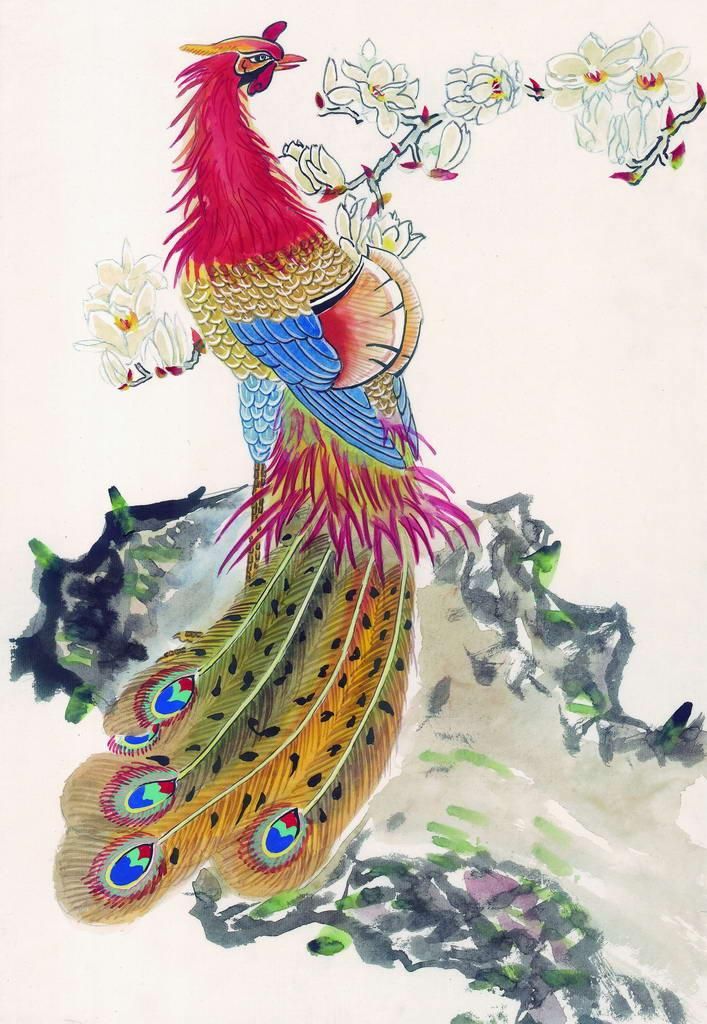
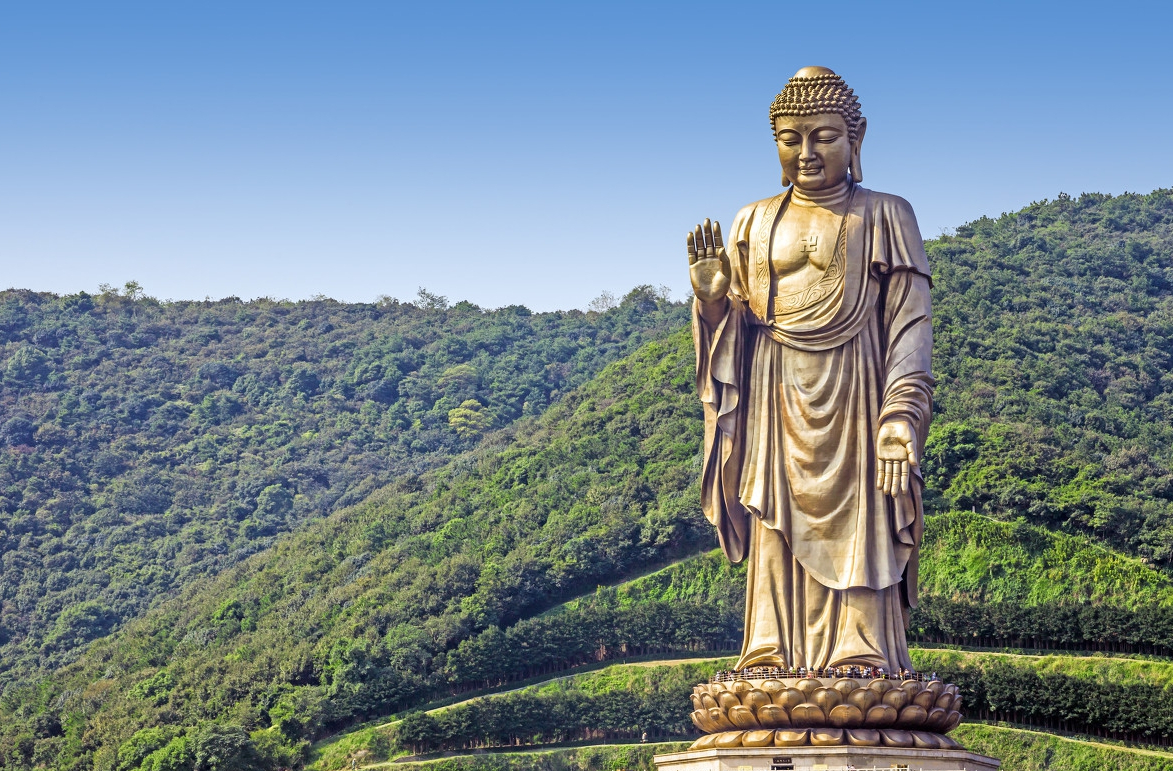
佛教,起源于远古印度迦毗罗卫国(现在的尼泊尔)的太子悉达多·乔达摩(佛号释迦牟尼)在大约西元前6世纪对于佛弟子所开示的教导,后发展为宗教。全世界约有5亿佛教信众[1][2][3][4][5][6][7][8],常被视为世界三大宗教之一。在世界上尤其是对于东亚、中亚、东南亚和南亚地区曾具有广泛的影响。世界佛教各派别占佛教信徒的人口比例是:大乘佛教56%,上座部佛教38%,密宗6%。[9]
佛,意思是“觉者”[10]。佛又称如来、应供、正遍知、明行足、善逝、世间解、无上士、调御丈夫、天人师、世尊[11]。佛教重视人类心灵和道德的进步和觉悟。按照佛教的观点,人和其他众生一样,沉沦于苦迫之中,并不断的轮转生死。惟有断除无明的人才能出三界脱离轮回。悉达多·乔达摩就在35岁时成佛,并对众人宣扬他所发现的道理。佛教信徒修习佛教的目的即在于从悉达多所悟到的道理里,看透生命和宇宙的真相,最终超越生死和苦、断尽一切烦恼,得到究竟解脱。
佛教(英语:Buddhism)起源于古印度河流域迦毗罗卫国(今尼泊尔和印度边界间靠近尼泊尔)的王室太子悉达多·乔答摩于35岁修道成为释迦牟尼佛后在约前6世纪对弟子开示的“苦的止息、趣(趋)向涅槃”的教导内容,后宗教化,为现代世界三大宗教之一。对于世界上,尤其是东亚、东南亚文化具有深刻的影响,此外在中亚和南亚地区文化曾具有广泛的影响,现正在向欧洲、非洲、北美洲发展。佛教经历史发展,通过南、北两条传播途径,现代存在南传上座部佛教、北传大乘佛教两条支脉,其中大乘佛教又分为显宗(汉传佛教的主要内容)和密宗(藏传佛教的主要内容),故也有上座部、汉传佛教(大乘)、藏传佛教(金刚乘)三分法[注 1],各脉又有诸多宗派;南传主要为以声闻乘阿罗汉果为最高圣位,北传则追求在未来世成佛,皆称为涅槃。
教主为释迦牟尼佛,广义上也包含三世诸佛,一般尊称其为佛陀,义为觉者、觉悟者。佛教的本意是佛陀的教育,而不是指拜神佛的宗教,比起其他宗教教义更像是一种哲理,这是由于最原始的佛教概念中,没有明确指出神明的定义甚至反对迷信,因而后世的佛教尽管有些神话故事与规范,始终带有一些不可知论的气息,佛陀认为不应该浪费时间思考对灭苦没帮助的概念。佛教在历史上曾对世界文化传播做出了不可磨灭的贡献。佛教重视人类心灵和道德的进步和觉悟。按照佛教的观点,人和其他六道众生一样,沉沦于苦迫之中,并不断的轮转生死,惟有断除无明的人才能出三界离轮回。教徒修习佛教的目的即在于追随并实践悉达多所觉悟的四圣谛,看透生命和宇宙的真相,断尽一切烦恼,最终超越生老病死和所有苦结束轮回,得到究竟解脱进入涅槃。
2010年普查显示全世界约有5亿佛教徒[1][2][3][4][5][6][7][8]。21世纪世界佛教徒的人口分布是:汉传佛教地区67.3%(3.6亿人),南传佛教地区28%(1.5亿人),藏传佛教地区3.4%(1800万人),亚洲以外地区1.3%(700万人)。[9]
Der Buddhismus ist eine Lehrtradition und Religion, die ihren Ursprung in Indien hat. Sie hat weltweit je nach Quelle zwischen 230 und 500 Millionen[1][2][3] Anhänger – und ist damit die viertgrößte Religion der Erde (nach Christentum, Islam und Hinduismus). Der Buddhismus ist hauptsächlich in Süd-, Südost- und Ostasien verbreitet. Etwa die Hälfte aller Buddhisten leben in China.[4]
Die Buddhisten berufen sich auf die Lehren des Siddhartha Gautama, der in Nordindien lebte, nach den heute in der Forschung vorherrschenden Datierungsansätzen im 6. und möglicherweise noch im frühen 5. Jahrhundert v. Chr. Er wird als der „historische Buddha“ bezeichnet, um ihn von den mythischen Buddha-Gestalten zu unterscheiden, die nicht historisch bezeugt sind. „Buddha“ (wörtlich „Erwachter“) ist ein Ehrentitel, der sich auf ein Erlebnis bezieht, das als Bodhi („Erwachen“) bezeichnet wird. Gemeint ist damit nach der buddhistischen Lehre eine fundamentale und befreiende Einsicht in die Grundtatsachen allen Lebens, aus der sich die Überwindung des leidhaften Daseins ergibt. Diese Erkenntnis nach dem Vorbild des historischen Buddha durch Befolgung seiner Lehren zu erlangen, ist das Ziel der buddhistischen Praxis. Dabei wird von den beiden Extremen selbstzerstörerischer Askese und ungezügeltem Hedonismus, aber auch generell von Radikalismus abgeraten, vielmehr soll ein Mittlerer Weg eingeschlagen werden.[5]
仏教(ぶっきょう、旧字体: 佛敎、サンスクリット: बौद्धधर्मः 、英語: Buddhism)は、インドの釈迦(ゴータマ・シッダッタ、もしくはガウタマ・シッダールタ、ゴータマ・シッダールタ)を開祖とする宗教である。キリスト教・イスラム教と並んで、日本では出版点数の多い宗教の一つに数えられる[注釈 1]。仏陀(仏、目覚めた人)の説いた教えである[注釈 2]。
その教義は、苦しみの輪廻から解脱することを目指している。原因と結果の理解に基づいており、諸々の現象が縁起するとされる。
仏教は仏、その教えである法、その実践者である僧からなる三宝を中心に組織されている。実践における戒定慧の三学は、戒律、心を集中する禅定、ものごとの縁起を観察する智慧であり、後ろ二つは併せて止観とも呼ばれる仏教の瞑想法である。実践にて重要となる能力は六波羅蜜や八正道のように、いくつかの方法でまとめられている。
紀元前450年ごろに、インドで開始された仏教は、今では初期仏教として研究されている。釈迦は、他の苦行などの実践者の主張であるアートマン(真我)の存在を否定して無我とした。釈迦の死後数百年で部派仏教が生まれ、大きく大衆部と上座部とに、さらに細かく分かれたが、今なお大きな勢力として続いているのは南伝した上座部仏教であり、初期の教えを模範としている。紀元前の終わりごろには北伝し日本にも伝わることになる大乗仏教が開始され、教義や団体は多彩に発展しており、禅の瞑想法の様々、チベットや日本の真言宗に残る密教、一方で浄土信仰のような信仰形態の変化など多様である。なお、『日本書紀』によれば仏教が伝来したのは飛鳥時代552年(欽明天皇13年)である(日本の仏教)。
Buddhism (/ˈbʊdɪzəm/, US also /ˈbuːd-/)[1][2] is the world's fourth-largest religion[3][4] with over 520 million followers, or over 7% of the global population, known as Buddhists.[web 1][5] Buddhism encompasses a variety of traditions, beliefs and spiritual practices largely based on original teachings attributed to the Buddha and resulting interpreted philosophies. Buddhism originated in ancient India as a Sramana tradition sometime between the 6th and 4th centuries BCE, spreading through much of Asia. Two major extant branches of Buddhism are generally recognized by scholars: Theravada (Pali: "The School of the Elders") and Mahayana (Sanskrit: "The Great Vehicle").
Most Buddhist traditions share the goal of overcoming suffering and the cycle of death and rebirth, either by the attainment of Nirvana or through the path of Buddhahood.[6][7][8] Buddhist schools vary in their interpretation of the path to liberation, the relative importance and canonicity assigned to the various Buddhist texts, and their specific teachings and practices.[9][10] Widely observed practices include taking refuge in the Buddha, the Dharma and the Sangha, observance of moral precepts, monasticism, meditation, and the cultivation of the Paramitas (virtues).
Theravada Buddhism has a widespread following in Sri Lanka and Southeast Asia. Mahayana, which includes the traditions of Pure Land, Zen, Nichiren Buddhism, Shingon and Tiantai (Tendai), is found throughout East Asia.
Vajrayana, a body of teachings attributed to Indian adepts, may be viewed as a separate branch or as an aspect of Mahayana Buddhism.[11] Tibetan Buddhism, which preserves the Vajrayana teachings of eighth-century India, is practiced in the countries of the Himalayan region, Mongolia,[12] and Kalmykia.[13]
Le bouddhisme est une religion (notamment une religion d'État) ou, selon le point de vue occidental, une philosophie, voire les deux, dont les origines sont en Inde au Ve siècle av. J.-C. à la suite de l'éveil de Siddhartha Gautama et de son enseignement.
Le bouddhisme comptait en 2005 entre 230 millions et 500 millions d'adeptes1, ce qui en fait la quatrième religion mondiale, derrière (dans l'ordre décroissant) le christianisme, l'islam et l'hindouisme. L'historien des religions Odon Vallet mentionne que c'est « la seule grande religion au monde à avoir régressé au XXe siècle », en raison, notamment, des persécutions du bouddhisme en Chine et en Indochine par les régimes communistes2.
Le bouddhisme présente un ensemble ramifié de pratiques méditatives, de rituels religieux (prières, offrandes), de pratiques éthiques, de théories psychologiques, philosophiques, cosmogoniques et cosmologiques, abordées dans la perspective de la bodhi, « l'éveil ». À l'instar du jaïnisme, le bouddhisme est à l'origine une tradition shramana, et non brahmanique comme l'est l'hindouisme.
Les notions de dieu et de divinité dans le bouddhisme sont particulières : bien que le bouddhisme soit souvent perçu comme une religion sans dieu créateurn 1, la notion étant absente de la plupart des formes du bouddhismen 2, la vénération et le culte du Bouddha historique Siddhartha Gautama en tant que bhagavat joue un rôle important dans le Theravāda et également dans le Mahāyāna, dans lesquels il est un être éveillé ayant trois aspects ou manifestations (trikāya).
Il buddhismo o più comunemente buddismo [2] (sanscrito: buddha-śāsana) è una delle religioni[3][4] più antiche e più diffuse al mondo. Originato dagli insegnamenti dell'asceta itinerante indiano Siddhārtha Gautama (VI, V sec. a.C.), comunemente si compendia nelle dottrine fondate sulle Quattro nobili verità (sanscrito: Catvāri-ārya-satyāni).
Con il termine buddhismo si indica quindi quell'insieme di tradizioni, sistemi di pensiero, pratiche e tecniche spirituali, individuali e devozionali, nate dalle differenti interpretazioni di queste dottrine, che si sono evolute in modo anche molto eterogeneo e diversificato[5][6].
Sorto nel VI-V secolo a.C. come disciplina spirituale assunse nei secoli successivi i caratteri di dottrina filosofica e, secondo alcuni autori, di religione "ateistica"[7], intendendo con quest'ultimo termine non la negazione dell'esistenza degli dèi (deva), quanto piuttosto il fatto che la devozione ad essi, fatto comunque considerato positivo, non condurrebbe alla liberazione ultima. Altri considerano i libri sacri buddhisti (Canone pāli, Canone cinese e Canone tibetano) testi che non divinizzano Siddhartha Gautama Buddha Śākyamuni, ma Adi-Buddha o Buddha eterno, concetti buddhisti equivalenti a Dio.
A partire dall'India il buddhismo si diffuse nei secoli successivi soprattutto nel Sud-est asiatico e in Estremo Oriente, giungendo, a partire dal XIX secolo, anche in Occidente.
El budismo es una «doctrina filosófica y espiritual»23 no teísta perteneciente a la familia dhármica, derivada del brahmanismo y, según el vedismo, de tipo nástika.4 Comprende una variedad de tradiciones, creencias religiosas y prácticas espirituales principalmente atribuibles a Buda Gautama. El budismo se originó en la India entre los siglos VI y IV a. C., desde donde se extendió a gran parte del este de Asia y declinó su práctica en el país de origen durante la Edad Media. Existen dos ramas principales del budismo: Theravada (Escuela de los Ancianos) y Mahāyāna (El Gran Camino). El budismo es la cuarta religión más importante del mundo con más de 500 millones de adeptos, es decir el 7 % de la población mundial.
Las diferentes ramas del budismo difieren acerca de la exacta naturaleza del camino a la liberación; la importancia y el valor canónico de varias escrituras y enseñanzas, auto conocimiento y, especialmente, en las respectivas prácticas del budismo. Estas prácticas incluyen el Refugio Espiritual, la Samatha, Vipassana, Bodhicitta y las prácticas de la Vajrayāna del Estado de Generación y el Estado de Terminación. Fundamentalmente, el budismo contempla el estudio de las Escrituras budistas, observar los principios morales, renunciar a lo material, la práctica de la Meditación, cultivar la sabiduría, la bondad y la compasión, la práctica Mahāyāna de la Bodhicitta y las prácticas Vajrayāna del Estado de Generación y el Estado de Terminación.
En Theravada el objetivo final es lograr la cesación de las kleshas (estados destructivos mentales, incluyendo la ignorancia, la adhesión a lo material y la aversión) para lograr el sublime estado de Nirvana (espiritualidad) mediante la práctica de las Ocho Nobles Verdades (también conocido como el Camino del Medio), liberándose de esta forma del ciclo de sufrimiento y renacimiento. Therevada se sigue principalmente en Sri Lanka y el Sudeste de Asia.
La Mahāyāna incluye las tradiciones de Tierra Pura, Zen, Nichiren Budista, Budismo Shingon y Escuela Budista del Tiantai que tiene amplio seguimiento en todo el este de Asia. En lugar del Nirvana (espiritualidad), las enseñanzas de Mahāyāna se dirigen a lograr el estado de Buda (concepto) siguiendo el camino Bodhisattva, un estado donde se permanece en un ciclo de renacimiento para ayudar a otros a lograr su despertar al camino budista.
La Vajrayana cubre enseñanzas atribuidas a los indios Siddha y podría considerarse como una tercera rama del budismo o bien parte de la Mahāyāna. El budismo del Tíbet conserva las enseñanzas de la India del siglo VIII y se practica también en las regiones aledañas al Himalaya, en Mongolia y en Kalmukia. El budismo tibetano aspira al estado de Buda (concepto) o el llamado Cuerpo del Arco Iris ('ja' lus).
Derivado del movimiento Sramana, el budismo fue fundado en la India en el siglo VI a. C. por Buda Gautama2 y ha ido evolucionando hasta adquirir gran diversidad en escuelas y prácticas actuales. Se encontraron ciertas dificultades para definir el budismo en Occidente.
Будди́зм (санскр. बुद्ध धर्म, buddha dharma IAST; пали बुद्ध धम्म, buddha dhamma, «Учение Просветлённого»[1]; кит. 佛教 fójiào) — религиозно-философское учение (дхарма) о духовном пробуждении (бодхи), возникшее в середине 1-го тысячелетия до н. э. в Древней Индии. Основателем учения считается Сиддхартха Гаутама, впоследствии получивший имя Будда Шакьямуни[2].
Сами последователи этого учения называли его «Дхарма» (Закон, Учение) или «Буддхадхарма» (Учение Будды). Термин «буддизм» был создан европейцами в XIX веке[3]. Различные исследователи определяли буддизм по-разному, — как религию, философию, этическое учение, культурную традицию, цивилизацию, образование[4], как «науку о сознании»[5][6][4].
Буддизм — мировая религия, признанная многочисленными народами с разными традициями. По замечанию Е. А. Торчинова, «Без понимания буддизма невозможно понять и великие культуры Востока — индийскую, китайскую, не говоря уж о культурах Тибета и Монголии, пронизанных духом буддизма до их последних оснований»[3].
Der Buddhismus ist eine Lehrtradition und Religion, die ihren Ursprung in Indien hat. Sie hat weltweit je nach Quelle zwischen 230 und 500 Millionen[1][2][3] Anhänger – und ist damit die viertgrößte Religion der Erde (nach Christentum, Islam und Hinduismus). Der Buddhismus ist hauptsächlich in Süd-, Südost- und Ostasien verbreitet. Etwa die Hälfte aller Buddhisten leben in China.[4]
Die Buddhisten berufen sich auf die Lehren des Siddhartha Gautama, der in Nordindien lebte, nach den heute in der Forschung vorherrschenden Datierungsansätzen im 6. und möglicherweise noch im frühen 5. Jahrhundert v. Chr. Er wird als der „historische Buddha“ bezeichnet, um ihn von den mythischen Buddha-Gestalten zu unterscheiden, die nicht historisch bezeugt sind. „Buddha“ (wörtlich „Erwachter“) ist ein Ehrentitel, der sich auf ein Erlebnis bezieht, das als Bodhi („Erwachen“) bezeichnet wird. Gemeint ist damit nach der buddhistischen Lehre eine fundamentale und befreiende Einsicht in die Grundtatsachen allen Lebens, aus der sich die Überwindung des leidhaften Daseins ergibt. Diese Erkenntnis nach dem Vorbild des historischen Buddha durch Befolgung seiner Lehren zu erlangen, ist das Ziel der buddhistischen Praxis. Dabei wird von den beiden Extremen selbstzerstörerischer Askese und ungezügeltem Hedonismus, aber auch generell von Radikalismus abgeraten, vielmehr soll ein Mittlerer Weg eingeschlagen werden.[5]
佛教,起源于远古印度迦毗罗卫国(现在的尼泊尔)的太子悉达多·乔达摩(佛号释迦牟尼)在大约西元前6世纪对于佛弟子所开示的教导,后发展为宗教。全世界约有5亿佛教信众[1][2][3][4][5][6][7][8],常被视为世界三大宗教之一。在世界上尤其是对于东亚、中亚、东南亚和南亚地区曾具有广泛的影响。世界佛教各派别占佛教信徒的人口比例是:大乘佛教56%,上座部佛教38%,密宗6%。[9]
佛,意思是“觉者”[10]。佛又称如来、应供、正遍知、明行足、善逝、世间解、无上士、调御丈夫、天人师、世尊[11]。佛教重视人类心灵和道德的进步和觉悟。按照佛教的观点,人和其他众生一样,沉沦于苦迫之中,并不断的轮转生死。惟有断除无明的人才能出三界脱离轮回。悉达多·乔达摩就在35岁时成佛,并对众人宣扬他所发现的道理。佛教信徒修习佛教的目的即在于从悉达多所悟到的道理里,看透生命和宇宙的真相,最终超越生死和苦、断尽一切烦恼,得到究竟解脱。
佛教(英语:Buddhism)起源于古印度河流域迦毗罗卫国(今尼泊尔和印度边界间靠近尼泊尔)的王室太子悉达多·乔答摩于35岁修道成为释迦牟尼佛后在约前6世纪对弟子开示的“苦的止息、趣(趋)向涅槃”的教导内容,后宗教化,为现代世界三大宗教之一。对于世界上,尤其是东亚、东南亚文化具有深刻的影响,此外在中亚和南亚地区文化曾具有广泛的影响,现正在向欧洲、非洲、北美洲发展。佛教经历史发展,通过南、北两条传播途径,现代存在南传上座部佛教、北传大乘佛教两条支脉,其中大乘佛教又分为显宗(汉传佛教的主要内容)和密宗(藏传佛教的主要内容),故也有上座部、汉传佛教(大乘)、藏传佛教(金刚乘)三分法[注 1],各脉又有诸多宗派;南传主要为以声闻乘阿罗汉果为最高圣位,北传则追求在未来世成佛,皆称为涅槃。
教主为释迦牟尼佛,广义上也包含三世诸佛,一般尊称其为佛陀,义为觉者、觉悟者。佛教的本意是佛陀的教育,而不是指拜神佛的宗教,比起其他宗教教义更像是一种哲理,这是由于最原始的佛教概念中,没有明确指出神明的定义甚至反对迷信,因而后世的佛教尽管有些神话故事与规范,始终带有一些不可知论的气息,佛陀认为不应该浪费时间思考对灭苦没帮助的概念。佛教在历史上曾对世界文化传播做出了不可磨灭的贡献。佛教重视人类心灵和道德的进步和觉悟。按照佛教的观点,人和其他六道众生一样,沉沦于苦迫之中,并不断的轮转生死,惟有断除无明的人才能出三界离轮回。教徒修习佛教的目的即在于追随并实践悉达多所觉悟的四圣谛,看透生命和宇宙的真相,断尽一切烦恼,最终超越生老病死和所有苦结束轮回,得到究竟解脱进入涅槃。

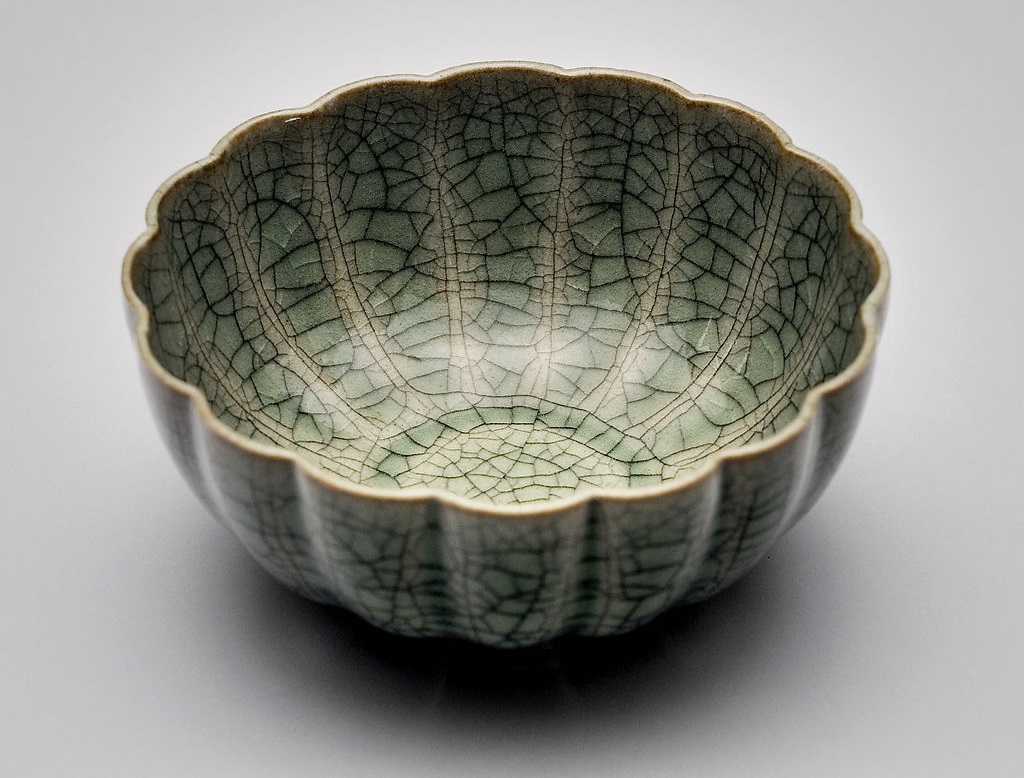
Ge ware or Ko ware (Chinese: 哥窯; pinyin: Gē yáo; Wade–Giles: Ko-yao) is a type of celadon or greenware in Chinese pottery. It was one of the Five Great Kilns of the Song dynasty recognised by later Chinese writers,[1] but has remained rather mysterious to modern scholars, with much debate as to which surviving pieces, if any, actually are Ge ware,[2] whether they actually come from the Song, and where they were made.[3] In recognition of this, many sources call all actual pieces Ge-type ware.[4]
It is clear that their distinguishing feature is deliberate crackle, or a network of cracks in the glaze; but this is not restricted to them, and in particular the related Guan ware uses very similar effects. Ge ware often shows "double crackle" or crackle of two types, and one view is that this is the defining characteristic of the type.[5] A three-day conference at the Shanghai Museum in 1992 attempted to reach a clear definition of Ge ware, but could not reconcile all views.[6]
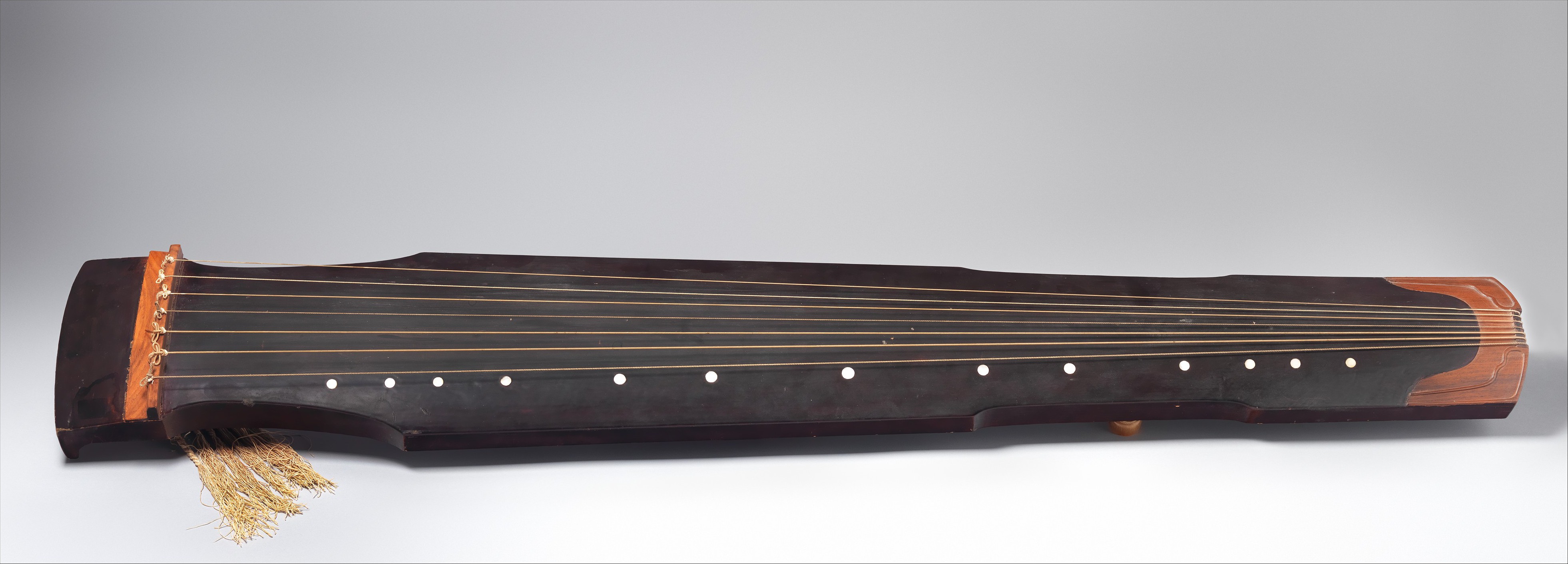
Die Qin (chinesisch 古琴 gǔqín, W.-G. ku-ch'in, ![]() guqin?/i) ist eine Griffbrettzither, die in der klassischen chinesischen Musik gespielt wird. Sie unterscheidet sich von anderen asiatischen Zithern durch das Fehlen der unter die Saiten geschobenen Stege wie z. B. bei der vietnamesischen Tranh oder der chinesischen Guzheng. Bei ihr wird der Ton wie bei einem Lauteninstrument mit den Fingern abgegriffen, wobei die Bünde durch Griffmarken ersetzt sind.
guqin?/i) ist eine Griffbrettzither, die in der klassischen chinesischen Musik gespielt wird. Sie unterscheidet sich von anderen asiatischen Zithern durch das Fehlen der unter die Saiten geschobenen Stege wie z. B. bei der vietnamesischen Tranh oder der chinesischen Guzheng. Bei ihr wird der Ton wie bei einem Lauteninstrument mit den Fingern abgegriffen, wobei die Bünde durch Griffmarken ersetzt sind.
古琴,原称琴,又称瑶琴、玉琴、五弦琴和七弦琴,是中国的拨弦乐器,有三千年以上历史,属于八音中的丝。古琴音域宽广,音色深沉,余音悠远。自古“琴”为其特指,于1920年代起为了与钢琴区别而改称古琴,[1]本文统称琴。初为五弦,汉朝起定制为七弦,且有标志音律的13个徽,亦为礼器和乐律法器。 琴是中国古代文化地位最崇高的乐器,[2]有“士无故不撤琴瑟”[3]和“左琴右书”[4]之说。位列“琴棋书画”四艺之首,被文人视为高雅的代表,亦为文人吟唱时的伴奏乐器,自古以来一直是许多文人必备的知识和必修的科目。[5]伯牙、子期以“高山流水”而成知音的故事流传至今;[6]琴台被视为友谊的象征。大量诗词文赋中有琴的身影。现存琴曲3360多首,琴谱130多部,[7]琴歌300首。主要流传范围是汉文化圈国家和地区,而西方也有琴人组织的琴社。
古琴(こきん、クーチン、拼音: )は、中国の古い伝統楽器。七弦琴(しちげんきん)・瑶琴(ようきん)とも呼ぶ。3000年の歴史がある撥弦楽器で、八音の「糸」に属し、7本の弦を持つ。箏などと違い、琴柱(ことじ)はなく徽(き)と呼ばれる印が13あり、これに従い、左指で弦を押さえて右指で弾く。古琴演奏技は、2003年、ユネスコの無形文化遺産保護条約に基づく「人類の無形文化遺産の代表的な一覧表」に掲載され、2009年9月に無形文化遺産として正式登録された[1]。
古琴は中国の文人が嗜むべきとされた“琴棋書画”の一番目である。孔子、諸葛孔明、竹林の七賢の嵆康、陶淵明、白居易など、歴史上著名な多くの文人によって演奏された。日本でも菅原道真、重明親王が学んだことが知られる。「君子左琴」「右書左琴」「伯牙絶弦」「知音」など、琴にまつわる故事成語も多い。宇宙探査機ボイジャーに積載されたゴールデンレコードには管平湖による古琴の演奏が収められている。
The guqin ([kùtɕʰǐn] (![]() listen); Chinese: 古琴) is a plucked seven-string Chinese musical instrument. It has been played since ancient times, and has traditionally been favoured by scholars and literati as an instrument of great subtlety and refinement, as highlighted by the quote "a gentleman does not part with his qin or se without good reason,"[1] as well as being associated with the ancient Chinese philosopher Confucius. It is sometimes referred to by the Chinese as "the father of Chinese music" or "the instrument of the sages". The guqin is not to be confused with the guzheng, another Chinese long stringed instrument also without frets, but with moveable bridges under each string.
listen); Chinese: 古琴) is a plucked seven-string Chinese musical instrument. It has been played since ancient times, and has traditionally been favoured by scholars and literati as an instrument of great subtlety and refinement, as highlighted by the quote "a gentleman does not part with his qin or se without good reason,"[1] as well as being associated with the ancient Chinese philosopher Confucius. It is sometimes referred to by the Chinese as "the father of Chinese music" or "the instrument of the sages". The guqin is not to be confused with the guzheng, another Chinese long stringed instrument also without frets, but with moveable bridges under each string.
Traditionally, the instrument was simply referred to as the "qin" (琴)[2] but by the twentieth century the term had come to be applied to many other musical instruments as well: the yangqin hammered dulcimer, the huqin family of bowed string instruments, and the Western piano are examples of this usage. The prefix "gu-" (古; meaning "ancient") was later added for clarification. Thus, the instrument is called "guqin" today. It can also be called qixian-qin (七絃琴; lit. "seven-stringed qin"). Because Robert Hans van Gulik's book about the qin is called The Lore of the Chinese Lute, the guqin is sometimes inaccurately called a lute.[3] Other incorrect classifications, mainly from music compact discs, include "harp" or "table-harp".
The guqin is a very quiet instrument, with a range of about four octaves, and its open strings are tuned in the bass register. Its lowest pitch is about two octaves below middle C, or the lowest note on the cello. Sounds are produced by plucking open strings, stopped strings, and harmonics. The use of glissando—sliding tones—gives it a sound reminiscent of a pizzicato cello, fretless double bass or a slide guitar. The qin is also capable of many harmonics, of which 91 are most commonly used and indicated by the dotted positions. By tradition, the qin originally had five strings, but ancient qin-like instruments with 10 or more strings have been found. The modern form has been standardized for about two millennia.
There are more than 3,360 known surviving pieces of guqin music from ancient and imperial periods. On 7 November 2003, UNESCO announced that the Chinese guqin was selected as an Intangible World Cultural Heritage. In 2006, guqin was listed in the List of National Non-material Cultural Heritage in China. In 2010, a Song period guqin was sold for $22 million, making it the most expensive musical instrument ever sold.[4]
Le guqinÉcouter (Chinois: 古琴; Pinyin: gǔqín ; EFEO : kouts'in; littéralement « instrument à cordes ancien »), ou qin, est un instrument de musique traditionnel chinois à cordes pincées de la famille des cithares (中華絃樂噐). « Le Guqin et sa musique » ont été inscrits par l'UNESCO en 2008 sur la liste représentative du patrimoine culturel immatériel de l’humanité (originellement proclamé en 2003)1.
Il qin (琴), o guqin (古琴), è uno strumento musicale cinese appartenente alla famiglia degli strumenti a corda detti cetre o salteri a tavola. Il vocabolo è traslitterato anche ch'in. Il significato del termine guqin è "antico strumento a corda" e l'origine dello strumento risale a più di duemila anni fa. Il qin è fornito di sette corde di diverso diametro la cui accordatura più classica (zheng diao) corrisponde - a partire dalla corda più bassa - a do, re, fa, sol, la, do (ottava), re (ottava); il corpo in legno cavo funge anche da tastiera, e la tastatura viene indicata da bottoni di avorio intarsiati sul lato della cassa.[1]
Il qin è disposto in posizione orizzontale, come la maggior parte delle cetre a tavola dell'asia orientale. Si pizzicano le corde con la mano destra, mentre la sinistra usa le tecniche del glissando e degli armonici. Il suono melodioso e caldo conferisce all'ascoltatore un senso di raccoglimento e meditazione.
El Guqin léase (![]() escuchar) (en chino simplificado, 古琴; pinyin, gǔqín; Wade-Giles: ku-ch'in , lit: antiguo instrumento de cuerda) es el nombre moderno de un instrumento musical chino de siete cuerdas de seda, de la misma familia de la cítara, la cual consiste en una caja oblonga de 120 cm de largo, por 15 cm de ancho y 5 cm alrededor en sus bordes, elaborada con la madera del catalpa ovata o china (Catalpa kaempferi) en su tablero y de la firmina platanifolia (Firminia platanifolia) en su caja de resonancia. (中華絃樂噐/中华弦乐器). El guqin ha sido interpretado desde los tiempos antiguos, como instrumento preferido de eruditos e intelectuales por su carácter sutil y refinado. Los chinos lo llaman a menudo 「國樂之父/国乐之父」, que significa «padre de la música china».
escuchar) (en chino simplificado, 古琴; pinyin, gǔqín; Wade-Giles: ku-ch'in , lit: antiguo instrumento de cuerda) es el nombre moderno de un instrumento musical chino de siete cuerdas de seda, de la misma familia de la cítara, la cual consiste en una caja oblonga de 120 cm de largo, por 15 cm de ancho y 5 cm alrededor en sus bordes, elaborada con la madera del catalpa ovata o china (Catalpa kaempferi) en su tablero y de la firmina platanifolia (Firminia platanifolia) en su caja de resonancia. (中華絃樂噐/中华弦乐器). El guqin ha sido interpretado desde los tiempos antiguos, como instrumento preferido de eruditos e intelectuales por su carácter sutil y refinado. Los chinos lo llaman a menudo 「國樂之父/国乐之父」, que significa «padre de la música china».
El nombre tradicional era qin 「琴」, que también puede ser escrito 「琹」, 「珡」 y de otras maneras antiguas, pero desde el siglo XX la palabra fue aplicada para referirse también a otros instrumentos musicales. El yangqin 「揚琴/扬琴」, el huqin 「胡琴」, ambos instrumentos de cuerda, y el piano occidental (chino tradicional: 鋼琴; chino simplificado: 钢琴; pinyin: gāng qín; que significa «instrumento de cuerda de acero») son algunos ejemplos del uso de la palabra “qin” en otros instrumentos, por eso se adhirió el prefijo "gu-" 「古」; que significa “antiguo”, para la diferenciación. También se lo llama qixianqin (「七絃琴」; “instrumento de siete cuerdas”). No debe ser confundido con el guzheng 「古箏/古筝」, otro instrumento de la familia de la cítara, también sin trastes y con puentes bajo cada cuerda. Debido al nombre del conocido libro de Robert Hans van Gulik The Lore of the Chinese Lute,1 sobre el guqin, este es frecuente y erróneamente llamado laúd. Otra denominación incorrecta, encontrada sobre todo en discos compactos de música, es por ejemplo el de “arpa".
El sonido que produce el guqin es bajo y muy suave, con un rango de unas cuatro octavas. Su tono más bajo es de dos octavas por debajo del do central del piano. Tradicionalmente tiene cinco cuerdas, pero se han encontrado instrumentos similares de la antigüedad con diez cuerdas o más. La forma moderna de siete cuerdas ha sido la estándar durante dos milenios. Muchas personas que tocan el guqin o que han escuchado a alguien tocándolo afirman que la música de aquel instrumento es muy similar a la del género blues.
El guqin y su música fue proclamado en 2003 e inscrito en 2008 en la Lista representativa del Patrimonio Cultural Inmaterial de la Humanidad de la Unesco.2
Цисяньци́нь (кит. 七絃琴, ци «семь», сянь «струны», цинь «струнный инструмент»), также называется «гуцинь» (gǔqín 古琴), или «старинный цинь»[2] — китайский 7-струнный щипковый музыкальный инструмент, разновидность цитры (см. также цинь).




Guan ware or Kuan ware (Chinese: 官窯; pinyin: guān yáo; Wade–Giles: kuan-yao) is one of the Five Famous Kilns of Song Dynasty China, making high-status stonewares, whose surface decoration relied heavily on crackled glaze, randomly crazed by a network of crack lines in the glaze.
Guan means "official" in Chinese and Guan ware was, most unusually for Chinese ceramics of the period, the result of an imperial initiative resulting from the loss of access to northern kilns such as those making Ru ware and Jun ware after the invasion of the north and the flight of a Song prince to establish the Southern Song at a new capital at Hangzhou, Zhejiang province. It is usually assumed that potters from the northern imperial kilns followed the court south to man the new kilns.[1]
In some Asian sources "Guan ware" may be used in the literally translated sense to cover any "official" wares ordered by the Imperial court.[2]
官窑广义是指朝廷开设的窑场,狭义是北宋大观、政和年间,官府在汴京(今河南开封)开设的瓷窑场。官窑是中国古时五大瓷窑(汝窑、官窑、哥窑、钧窑、定窑)之一。后世广意上官窑意指由中国历代政府营建,为其烧造瓷器的窑场,所生产的陶瓷供宫廷所用。因此除了有名的宋代官窑之外,亦有辽代官窑、明代官窑等。官窑产品必须符合皇家的审美观,客观上就限制了陶瓷工匠的艺术发展,清乾隆之后,官窑产品也就逐渐没落了。
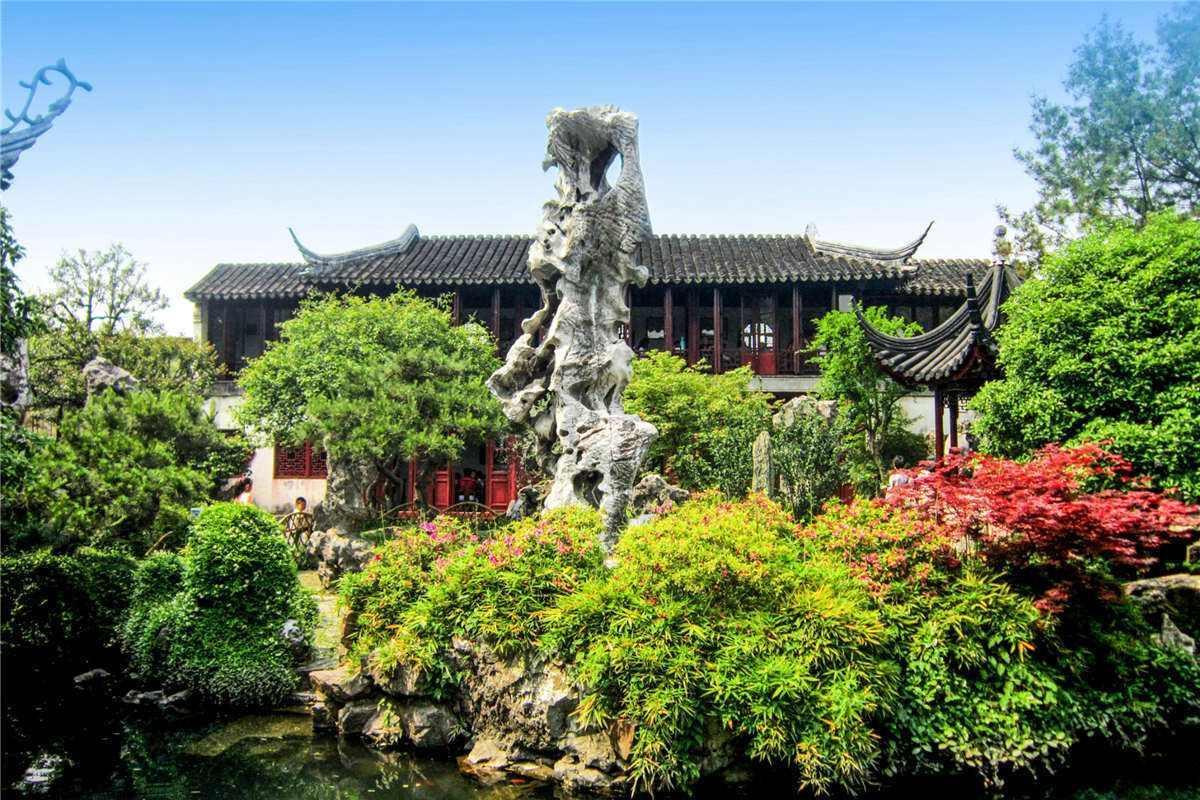

in alter Zeit gebräuchlicher Sonnenschattenstab,mit dessen Hilfe man die 24 Jahreseinteilungen und die Länge eines Jahres feststellte.
 Art
Art
 Sport
Sport
 Religion
Religion

 Architecture
Architecture
 History
History
 Literature
Literature
 Music
Music
 World Heritage
World Heritage
 Vacation and Travel
Vacation and Travel
 Musical instrument
Musical instrument
 Performing Arts
Performing Arts
 Science and technology
Science and technology
 Review
Review